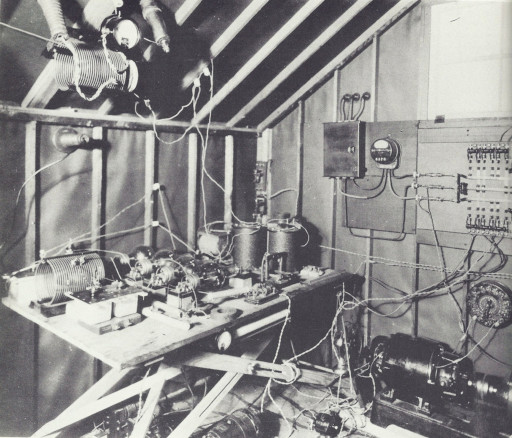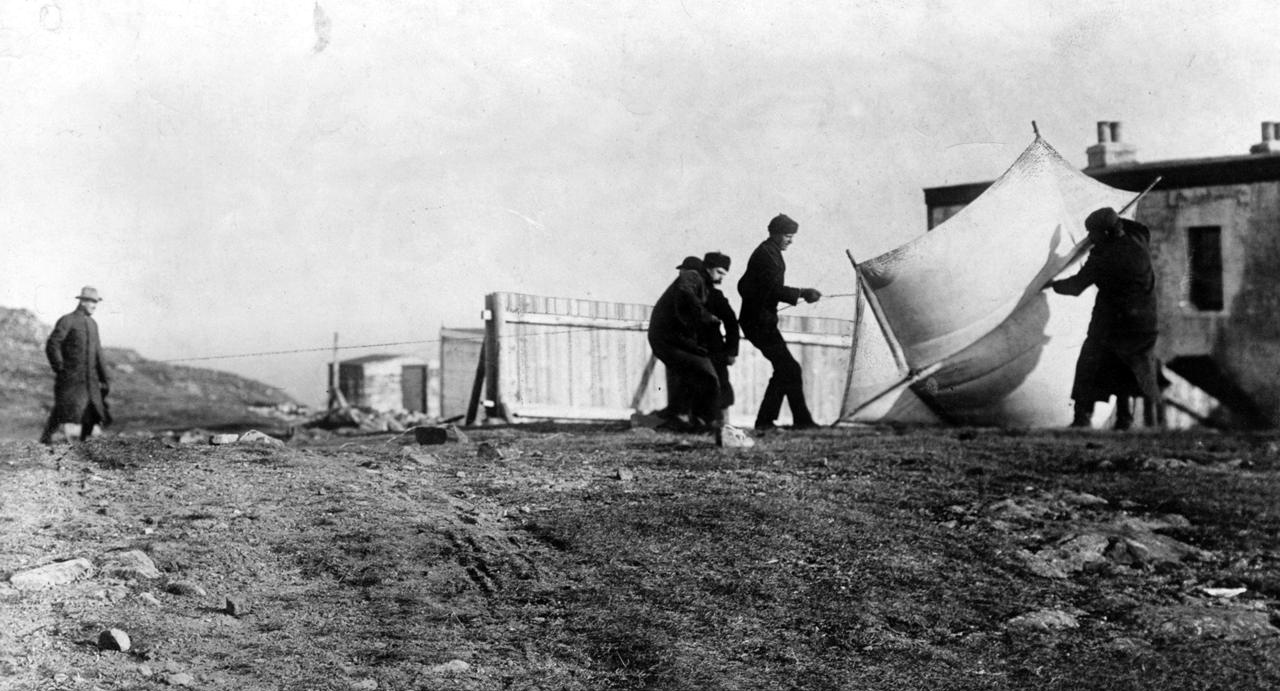
1BCG Transmitter in 1921 (Source: 1BCG.org)
Many thanks to SWLing Post contributor, Mark (AE2EA), who shares the following announcement:
2021 marks the 100th year anniversary of the historic Transatlantic Tests, where radio amateurs using the call sign 1BCG were responsible for the first successful radio communication across the Atlantic Ocean on “short waves.”
On December 11, 2021 the Antique Wireless Association will recreate these historic transmissions on 160 meters from the Vintage Radio and Communications Museum of Connecticut, using a replica transmitter constructed by volunteers at the Antique Wireless Association. This special event is your opportunity to relive a historic moment in amateur radio history.
More information can be found here http://1BCG.org
Here’s a summary:
The 1BCG replica transmitter will be operating as W2AN/1BCG on 1.820 MHz, plus or minus, using CW, from The Vintage Radio and Communications Museum of Connecticut. Transmissions from W2AN/1BCG will be one-way, just like the original transatlantic tests in 1921. You can get a SWL certificate for this Special Event by sending a copy of the transmitted message to [email protected]
Schedule: Transmissions start on December 11, 2021, on 1.820 MHz, +/-, at 1800 EST or 2300 UTC, then every 15 minutes thereafter for a total of five hours thusly; 1815, 1830, 1845, 1900, 1915, 1930, 1945, 2000, 2015, 2030, 2045, 2100, 2115, 2130, 2145, 2200, 2215, 2230 and the last transmission at 2245 EST.
Mark ~ AE2EA
Antique Wireless Association
I will definitely be listening! Thank you so much for sharing this, Mark!



